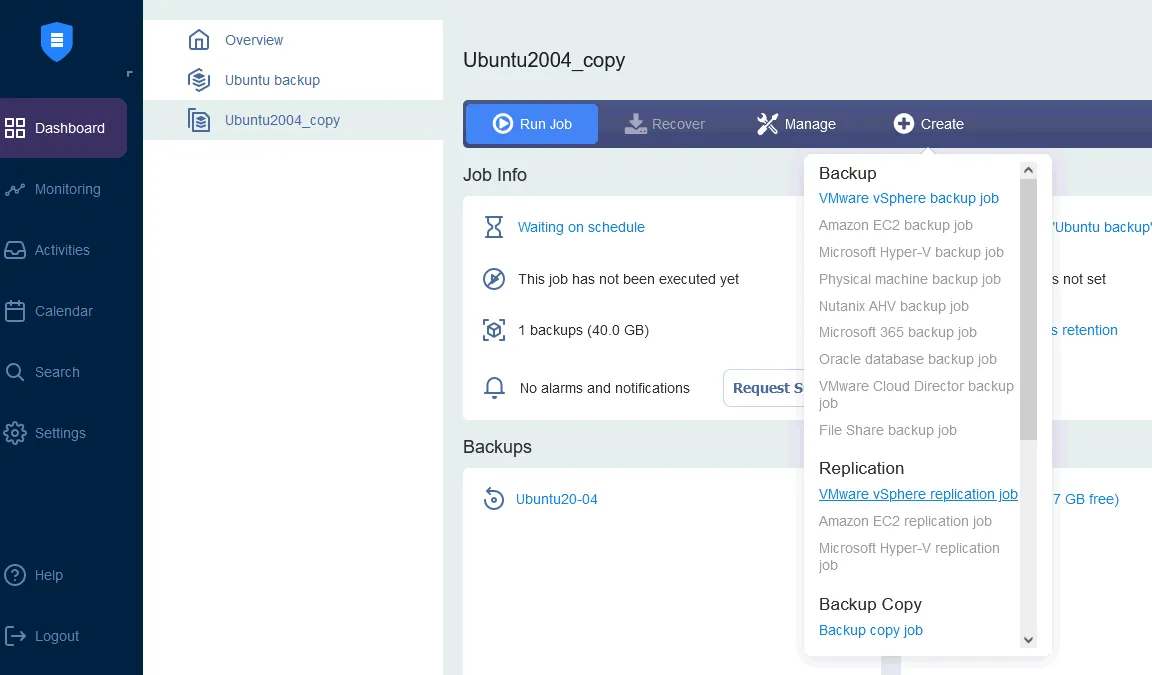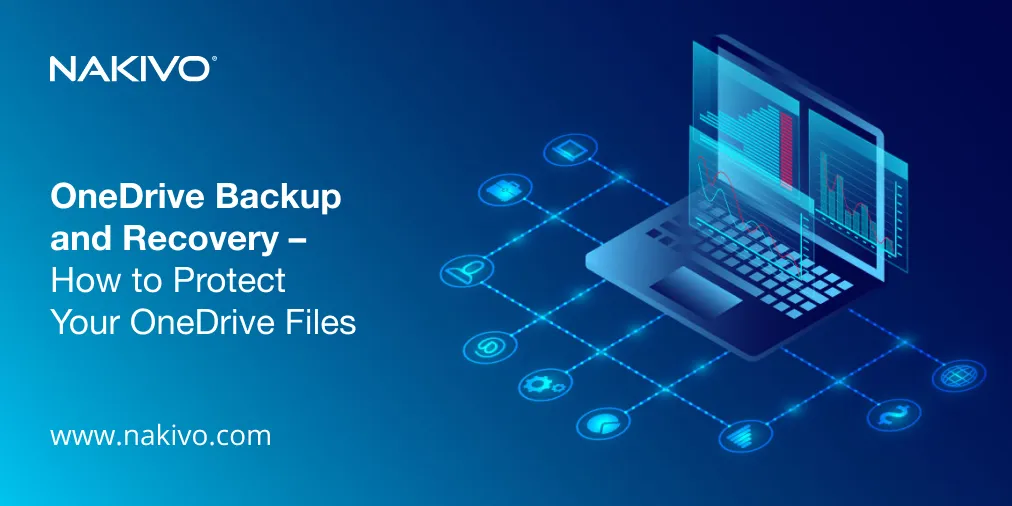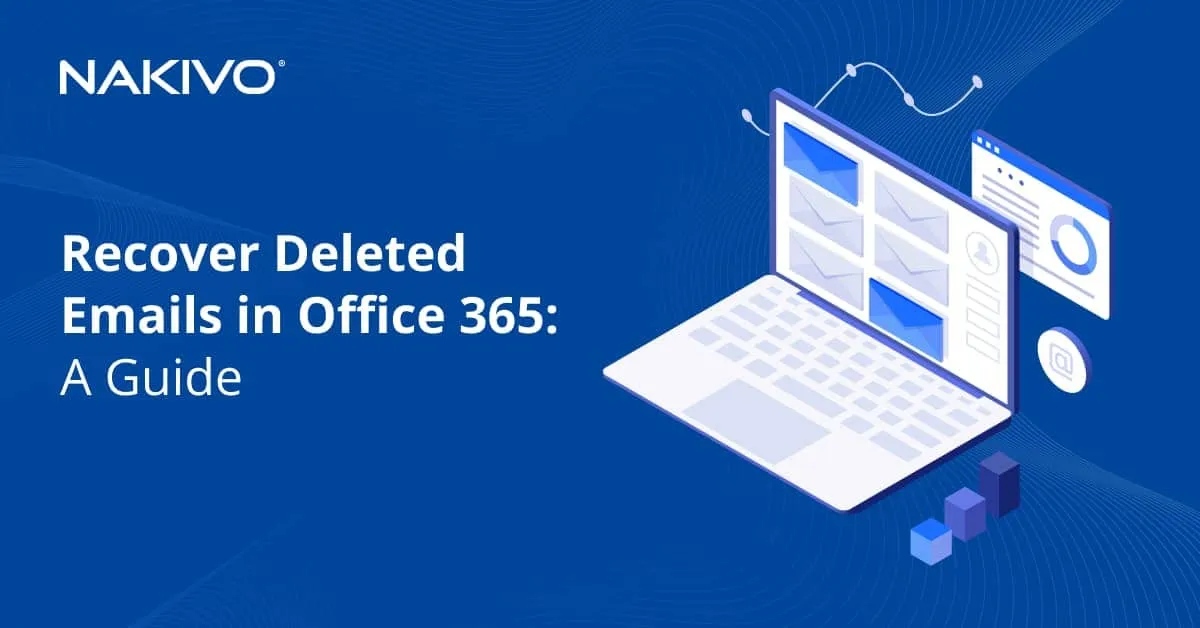Building an Effective Backup Strategy for an Organization
Companies can face different disruptions, from hardware and software failures to human errors and cyberattacks. In 2021 alone, the percentage of organizations that were under ransomware attacks increased to 68%. And in 2022, no more than 43% of organizations feel confident that they can deal with a ransomware attack.
To remain competitive and succeed in the long run, businesses must continue to deliver the same level of services in any disruptive scenario. For customers, even minor downtime can give the impression that a business is unreliable and unsustainable. For this reason, an effective data backup strategy is now a necessity, as it can minimize downtime, allow uninterrupted services, and keep business-critical data and applications safe.
A data backup strategy determines which actions should be taken to ensure continuous business performance even during a disaster. Regular data backups lie at the core of a solid backup strategy, guaranteeing that a copy of critical data is stored on a different medium and at a potentially different location than the production data to be used for recovery when needed.
This blog post explains the steps to build a reliable backup strategy and the data backup best practices to use with a dedicated backup and recovery solution.
Building an Enterprise Backup Strategy
Before you can start developing a data backup strategy, you first need to answer the following questions:
- What data do you need to back up and how often?
- What are your recovery objectives?
- Where will you store backups?
- What are common threats to your organization’s systems and data?
- What amount of resources can be allocated to backup strategy implementation?
- Which backup solution vendor should you choose for a data backup strategy?
These questions reflect essential steps of an effective backup strategy, from planning to determining needs and goals, backup budget, backup storage, etc. to implementation and administration (automation to reduce human errors, etc.).
All these enterprise backup strategy steps will be discussed below as we describe their role in minimizing the consequences of unexpected data loss.
1. Determine your backup needs.
Categorize data and systems by how critical they are for business operations. Which systems can tolerate the least downtime and data loss? Which systems can be recovered later? You need to carefully assess what type of data must be stored in backups and assign a priority level to them. A priority level determines how losing this particular data set might affect your organization. This will dictate how frequent the backup for each data category will be: hourly, daily or weekly.
What’s more, the choice of data to back up will dictate which backup storage to use, how much storage space you need, which preventive security measures to deploy, and how much to spend on the data backup strategy implementation.
2. Select backup storage.
After you determine which data should be backed up and in what order, you need to establish an approach to backup storage for your data backup plan. Here, you should answer two questions:
- Which backup storage devices should be used?
- How accessible data backups should be in order to maintain business operations?
To find the right answers, let’s look at all the options available:
- Backup storage devices. Backup data can be kept on various storage devices and platforms: local or USB disks, network-attached storage (NAS), CIFS/NFS network shares, tape, and cloud. All these types of storage media offer different levels of accessibility and recoverability. Thus, in order to make the right choice, you need to calculate the recovery time objective (RTO) and recovery point objective (RPO) to meet the organization’s needs.
RTO determines the maximum tolerable amount of downtime for your business, and RPO specifies the maximum tolerable amount of data loss measured in hours since the last successful backup.
- Backup storage location. Depending on the priority level of data, you can choose to store your backups on-premises or offsite (including in the cloud).
- Locally stored backups are easily maintained and secure as well as provide the quickest recovery, but they are more prone to damage and destruction in case of disaster, leaving you with no chance for a successful recovery.
- Cloud-based backup storage, on the other hand, is a more flexible and affordable option that minimizes management overhead and business downtime typically associated with on-premises backups.
Currently, most organizations prefer running hybrid backups to have an easily recoverable onsite backup as well as a reliable offsite backup, reducing the risk of complete data loss. An effective backup strategy must include accessible, secure, and cost-effective storage.
3. Be aware of potential threats to your systems.
The next point to consider with proper care and attention is the risks and threats your organization is most likely to face. Analyzing the most common scenarios helps calculate the true cost of service disruption and data loss, as well as identify your infrastructure’s vulnerabilities. Data can be lost as a result of ransomware attacks, human errors, hardware or software failures, power outages, natural disasters, and more.
If you are aware of what might put your business at risk, you can adopt disaster prevention and mitigation measures that work specifically for your organization. This is a sure way of making your infrastructure more resilient.
4. Automate backups.
Your backup schedule must be set up according to your business needs. Consider how critical a particular data set is and how its loss can impact your business. When it comes to the files of lower priority, weekly or monthly backups would suffice. However, if your organization produces a large amount of data on a daily basis, you should set up hourly backups to keep your data up-to-date. You can choose from following backup frequency schemes: continuous, hourly, daily, weekly, monthly, and yearly.
It is also important to consider the parameters of the backup window, which is a time slot for effectively running data backups without disrupting business operations. The most common approach is to perform backups overnight or on weekends when the infrastructure has a minimal load.
Backup automation is another point of an enterprise backup strategy. Automate running your backup jobs to save administration time and ensure backups are created regularly and in a timely manner.
5. Perform backup testing.
Now that you have finally developed a data backup strategy, you are ready to integrate it into your data protection infrastructure. It might look good on paper, but does it actually work? To verify that your backup and recovery processes are running as expected, you need to perform backup testing. Three factors should be considered before running backup tests: what, when, and how often to test backups. It is recommended that you go through various disaster scenarios to fully test the potential of your backup strategy.
As a result of backup testing, you will determine whether your backups actually work, how fast business operations can be restored, and whether there are any issues with the backup strategy that should be fixed. Regular backup testing helps you refine the existing backup strategy and achieve the best possible outcome.
6. Implement effective backup administration.
Managing backups is an important but extremely challenging task that can take a lot of your time and resources. That being said, the real cost of data loss on your business can be much higher. The best way to ensure efficiency is to balance data protection activities and the resources needed for implementation. No matter how solid a backup strategy is, it can only be successful if there’s a trained team to make it work.
You need to form a team of reliable and knowledgeable administrators in your organization who can control backup and recovery processes from start to finish. The backup team will be responsible for:
- Running backups according to the set schedule
- Identifying the system’s weaknesses and fixing existing issues
- Updating the backup strategy with regard to changing business needs
- Informing employees of existing and newly added backup policies
- Testing the data backup strategy to ensure that data can be recovered from backups
By trusting your team with backup administration and monitoring, you can be sure that your backups are actually running, critical workloads are protected, and data recovery is possible.
7. Set your backup budget.
A backup budget determines how much your organization is willing to spend on implementing an enterprise backup strategy. What’s more, you need to calculate the potential cost of data loss for your organization and consider what the future needs for the backup strategy might be in terms of storage, resources, and implementation of new technologies. Thus, it is better to invest in building a comprehensive backup strategy than suffer from irreversible data loss later.
8. Select the backup vendor.
Lastly, you need to choose a reliable backup vendor that can help you integrate your backup strategy into your infrastructure. In this regard, you need to consider the solution’s price, available data protection options, supported platforms, the vendor’s reputation, etc.
Most backup vendors allow you to see their solution in action by running personal demos, downloading a free trial for a limited amount of time, or joining their beta test programs. This way, you can try out the product functionality in your environment, weigh its pros and cons, and determine its ability to implement your backup strategy.
Data Backup Best Practices
Consider the following backup best practices to implement the best backup strategy:
- Follow the 3-2-1 backup rule and have multiple backup copies in different locations.
- Compose a data backup plan with all needed components. A data backup plan can be part of a more comprehensive disaster recovery plan.
- Define RTOs and RPOs for your recovery plan.
- Select the highest priority for critical data to back up.
- Use the optimal backup rotating scheme and retention settings. Consider using the Grandfather-Father-Son retention policy.
- Define who can have access to data backups to respect the security policy.
- Encrypt data being transferred during a backup operation and encrypt made backups.
- Monitor your environment, including the backup system, after implementing.
Implementing the Backup Strategy with NAKIVO
NAKIVO Backup & Replication is the universal data protection solution that supports physical server and VM backup, as well as VM replication.
You can implement your enterprise backup strategy with the NAKIVO solution due to support for:
- Automated backup and VM replication
- Site recovery for VM disaster recovery
- Backup copy
- Backup to tape
- Backup to cloud
- Immutable backup repository
- Instant verification for backup testing
Download the Free Edition of NAKIVO Backup & Replication to try the solution in your environment.








